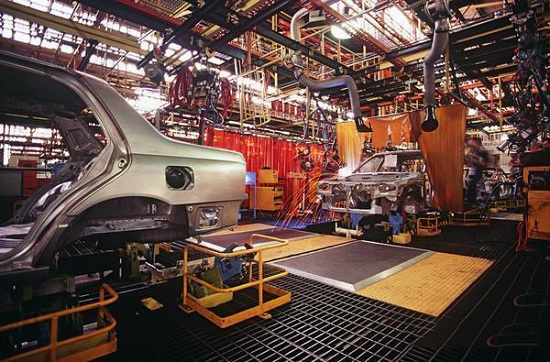Toyota is the latest example of this technology used by car manufacturers. At Toyota headquarters in Aichi Prefecture, Japan, employees like Koichi Kayano try to use Holo Lens to perform a variety of tasks. Kayano is a project manager in the company looking for ways to use 3D models, using AR head display to speed up the measurement of car paint and anti-rust coating thickness to ensure color consistency and prevent car body rust.
Usually this process takes two employees a whole day, but Holo Lens can shorten it to four hours, and only one employee is required to operate it. Traditional employees need to carefully lay special cardboard on the surface of the car body, with about 500 holes penetrated. Then an employee will use a measuring device to scan the visible paint.
But HoloLens also faces challenges in its use. First of all, Holo Lens is a big investment, costing $3,000 (developer version) and $5,000 (enterprise version). Second, since its launch two and a half years ago, its hardware hasn't been updated, weighing 1.3 pounds, which is very heavy if used for a long time. In addition, the battery life of the head display is only 2 to 3 hours.

Toyota is one of the growing number of car manufacturers who hope to rely on AR to improve all aspects of automobile manufacturing, from car design to car repair. These AR head displays allow users to fuse 3D images into real scenes.
For example, among the manufacturers that use HoloLens to assist in automotive design are Ford and Paka, a heavy truck manufacturer. Daimler recently said it has purchased more than 100 HoloLens headsets to train its mechanics through 3D models of components such as automobiles and brake systems.
But AR's market is still small: Eric Abbruzzese, an AR and VR analyst at ABI Research, expects to ship more than 2 million head displays and smart glasses this year. Most buyers in the market are still testing the technology, and Abbruzzese predicts that the number will rise to 29 million by 2023.
Today, Kayano and his team have developed an APP that allows them to skip the cardboard steps and directly use Holo Lens to project a digital dot matrix outside the real car to show which area of the car body needs to be tested.
Toyota can then make a very wise decision to figure out the proportion of nodules and determine how much the return on investment is," Abbruzzese said.
HoloLens is not the only product in the wearable AR device market. Its competitors include Magic Leap's recently released Magic Leap One Head Show and AR glasses from ODG, Vuzix and Epson. But Abbruzzese says that HoloLens has become the "gold standard" for high-end AR products because it can show users a 3D image somewhere in the real world and allow remote users to view the real scene from the user's perspective.
Although Toyota's Solo Lens project is still in the testing stage, the company says it has also helped develop vehicles that will soon be on the market.
Toyota declined to say how many AR devices it had purchased so far. But Microsoft confirmed that the Holo Lens purchased by car manufacturers were either directly from them or from suppliers.